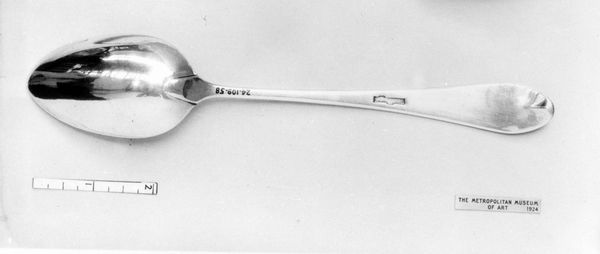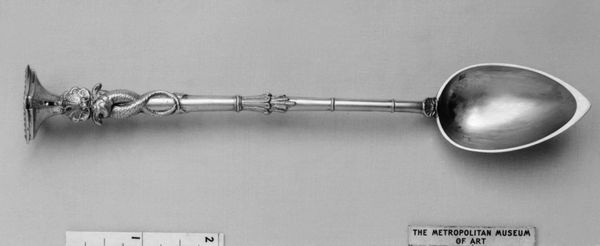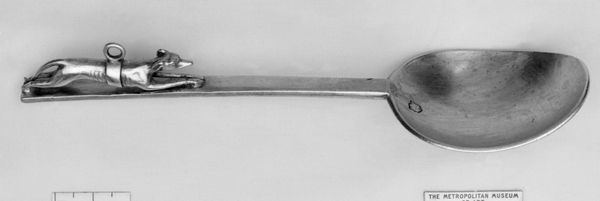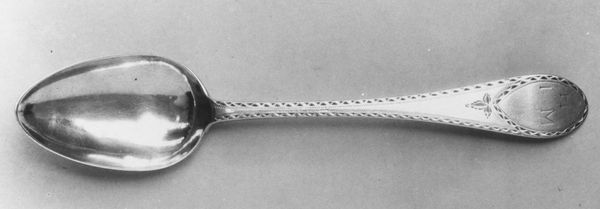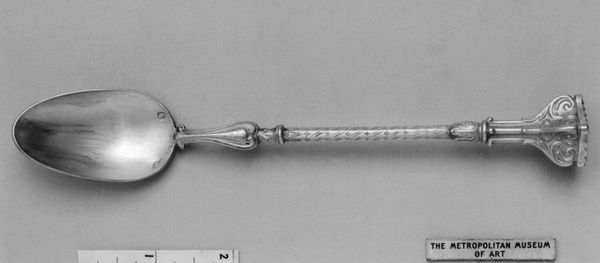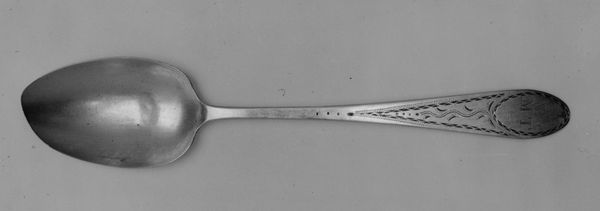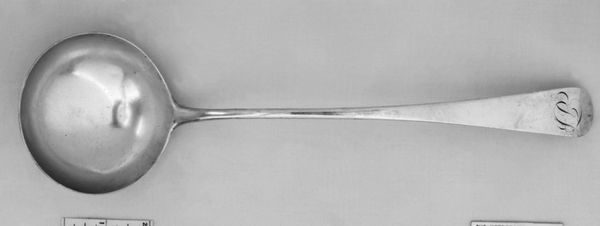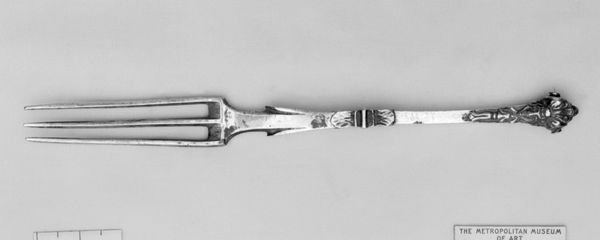
silver, metal, sculpture
#
neoclacissism
#
silver
#
metal
#
sculpture
#
sculpture
#
decorative-art
Dimensions: Length: 5 1/2 in. (14 cm)
Copyright: Public Domain
Editor: Here we have a coffee spoon, crafted in 1812 by Hans Bjerregaard Steen. It’s a decorative art piece, made of silver, and it just strikes me as incredibly delicate, with such ornate detailing. What can you tell me about it? Curator: This spoon embodies the material complexities often overlooked in discussions of "high art." Silver wasn't just a commodity; it represented concentrated wealth and power in the 19th century. The intricate Neoclassical design, ostensibly about beauty and refinement, speaks to the labour practices necessary for both the mining and crafting of such an object. Editor: So, it’s not just a pretty spoon? Curator: Absolutely not. Think about the silver itself – where did it come from? Who mined it? And then, who had the skill, the tools, the *time* to shape it into this elaborate form? Consumption drives production. This seemingly simple utensil hides a whole web of social and economic relationships. It is much more than a functional object, wouldn't you agree? Editor: Definitely. I never considered that. It's amazing how a simple spoon can tell such a complex story of labor, class, and the consumption of resources. Curator: Exactly! It forces us to reconsider the hierarchy of art itself. Why is a painting often valued over something like this spoon, when both require skilled labour and reflect specific social conditions? Editor: I guess I always saw decorative art as less important, but understanding the work involved and the historical context really changes things. Thanks, that was fascinating.
Comments
No comments
Be the first to comment and join the conversation on the ultimate creative platform.
